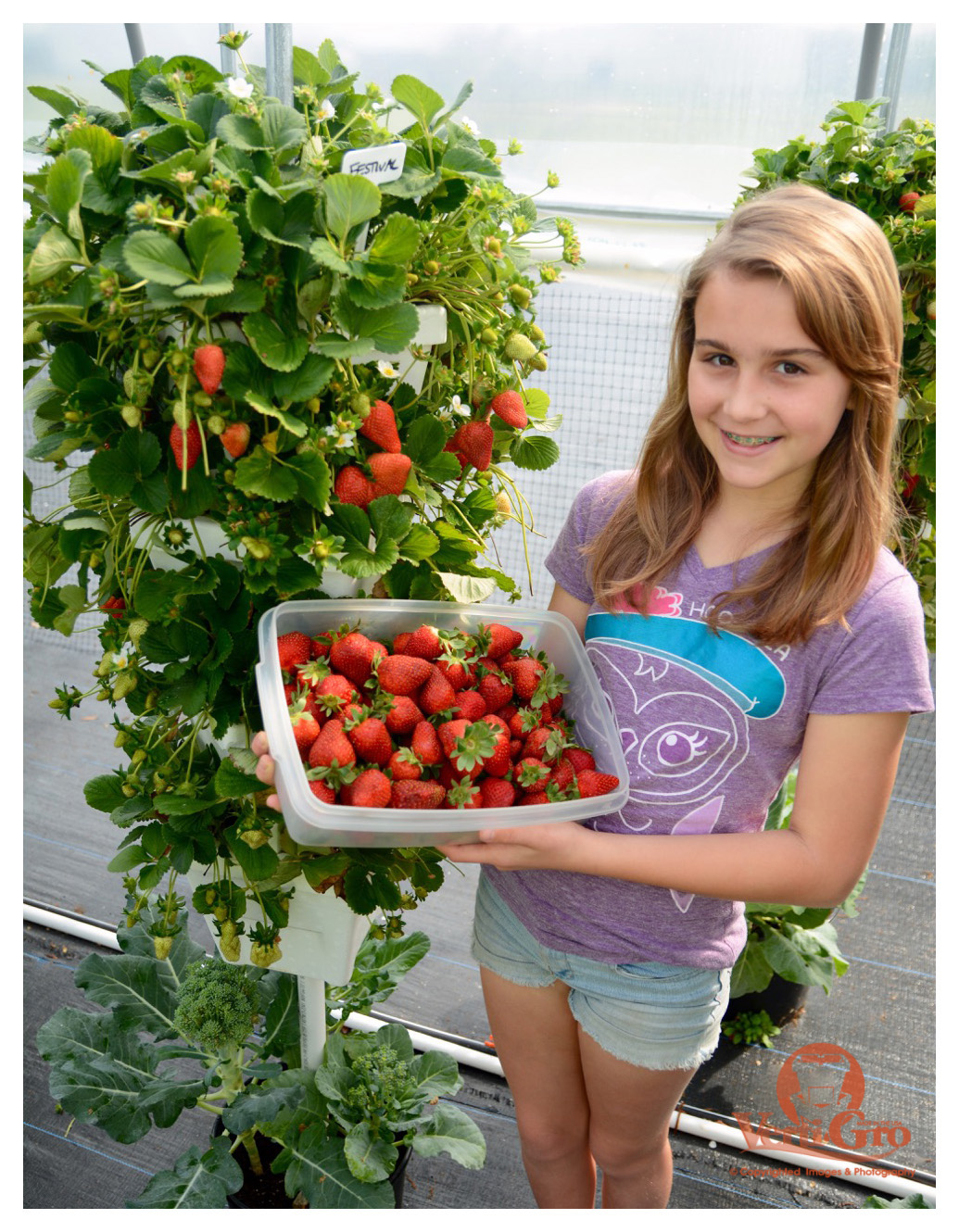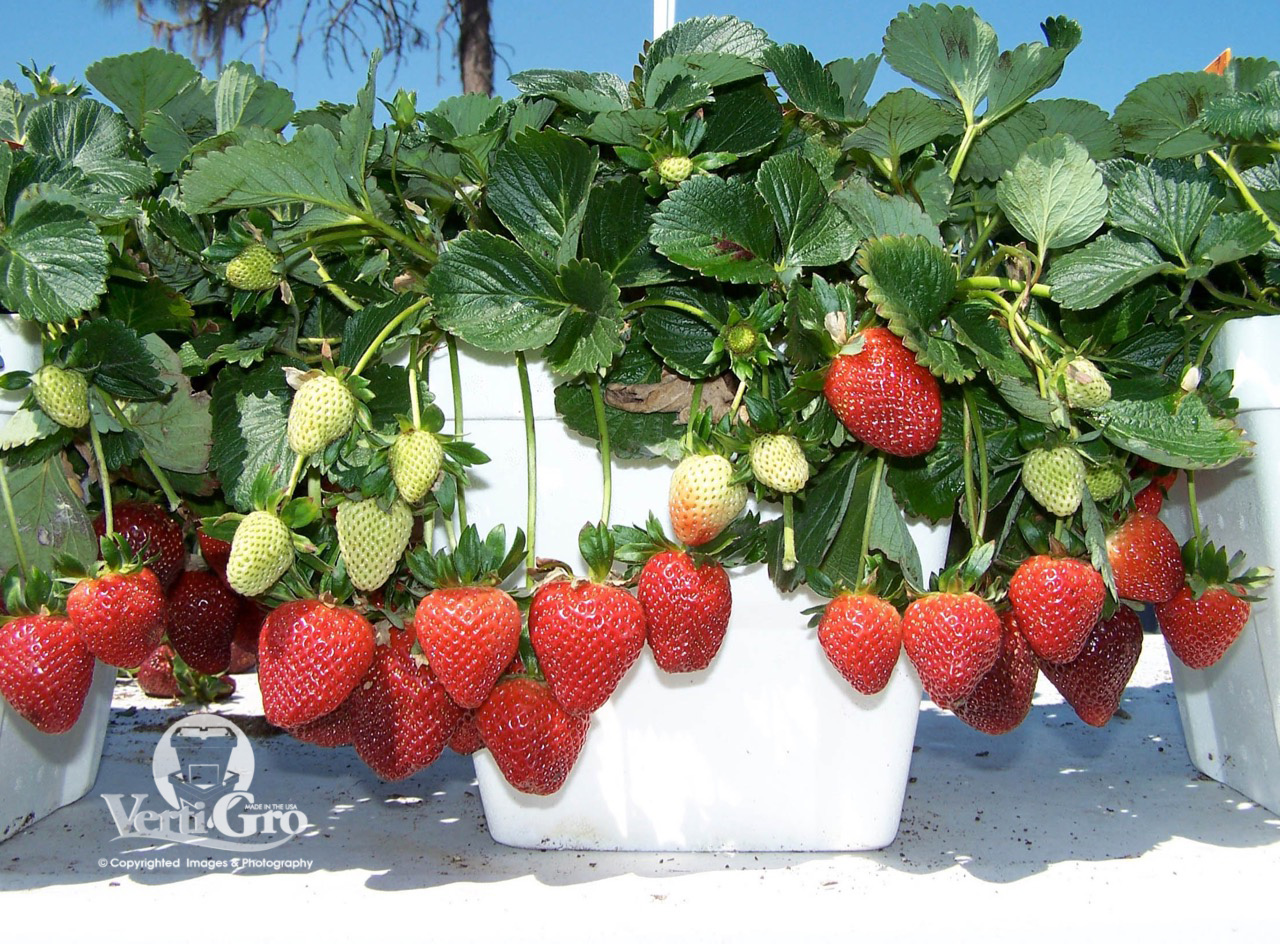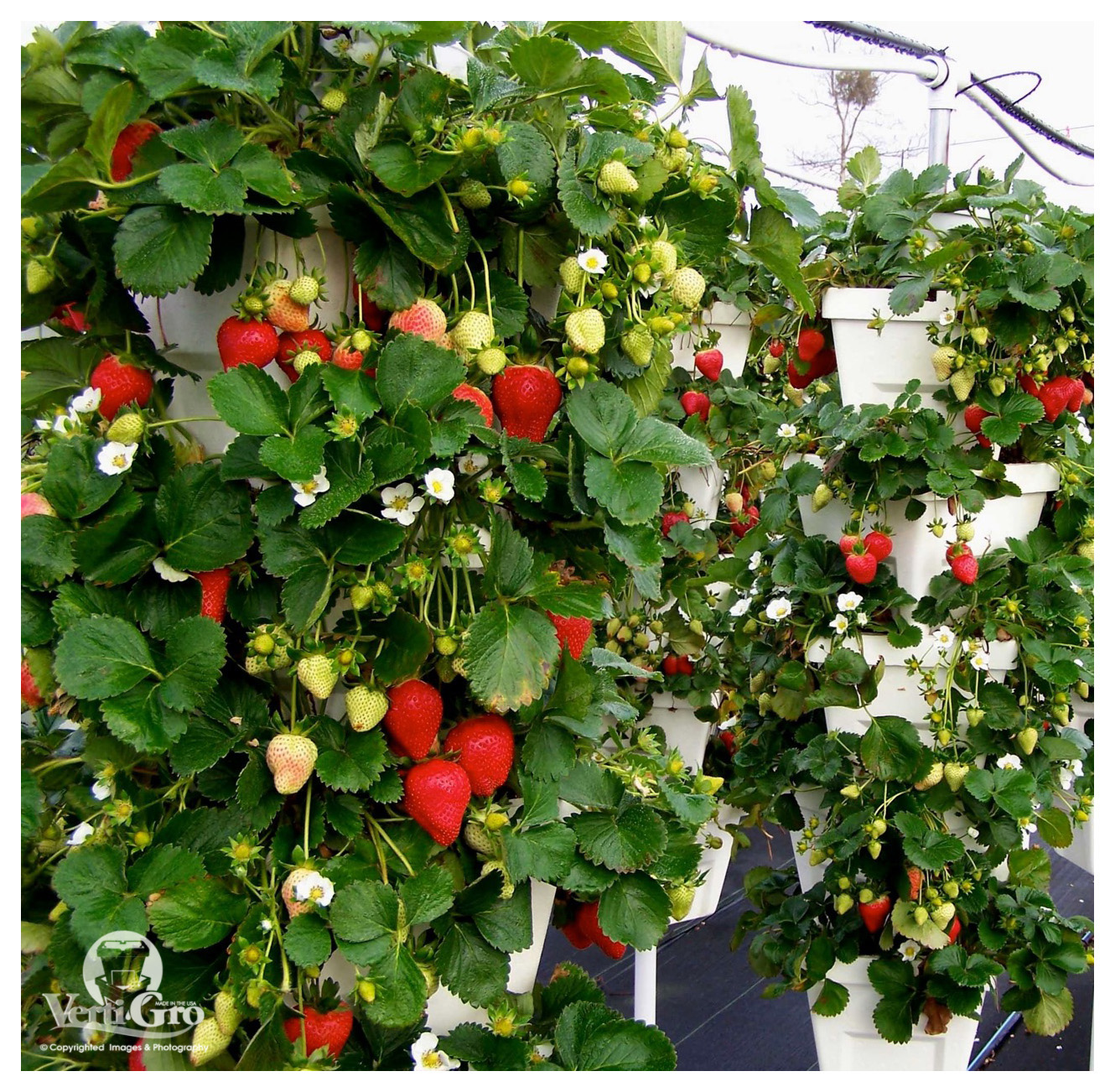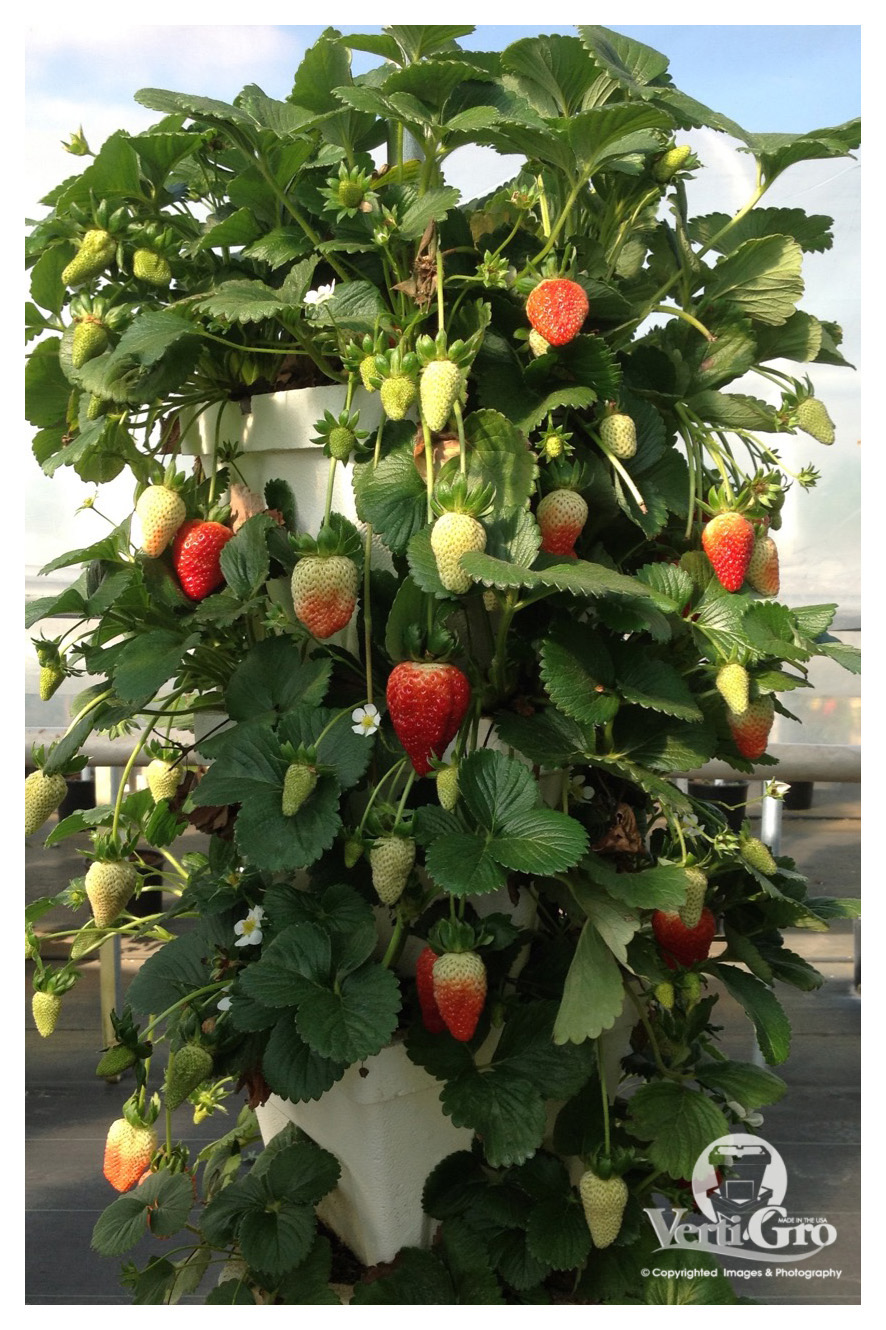|
Vertical Strawberry Production in Verti-Gro® (See Articles in the Resource section for Vertical Strawberry Production)
 

Strawberry Cultivation: Strawberry
cultivars vary widely in size, color, flavor, shape, degree of fertility,
season of ripening, liability to disease and constitution of plant. Some vary in foliage. For purposes of commercial production, plants
are propagated from runners and, in general, distributed as either bare root
plants or plugs. Because strawberry plants more than a year or two old begin to
decline in productivity and fruit quality, this system of replacing the plants
each year allows for improved yields and denser plantings.
Strawberries
are grouped according to their flowering habit.
Traditionally, this has consisted of a division between
"June-bearing" strawberries, which bear their fruit in the early
summer and "ever-bearing" strawberries, which often bear several
crops of fruit throughout the season. Research published in 2001 showed that
strawberries actually occur in three basic flowering habits: short-day,
long-day, and day-neutral. These refer to the day-length sensitivity of the
plant. Day-neutral cultivars produce flowers regardless of the photoperiod.
Strawberry Nutritional Value: One
serving (100 g; see Table) of strawberries contains approximately 33
kilocalories, is an excellent source of vitamin C, a good source of manganese,
and provides several other vitamins and dietary minerals in lesser
amounts Strawberries contain a modest
amount of essential unsaturated fatty acids in the achene (seed) oil. Pests:
Around 200 species of pests are known to attack strawberries both
directly and indirectly. These pests include slugs, moths, fruit flies,
chafers, strawberry root weevils, strawberry thrips, strawberry sap beetles,
strawberry crown moth, mites, aphids, and others. The caterpillars of a number
of species of Lepidoptera feed on strawberry plants.
Diseases: Strawberry plants can fall
victim to a number of diseases. The leaves may be infected by powdery mildew,
leaf spot, leaf blight, and by a variety of slime molds. The crown and roots
may fall victim to red stele, verticillium wilt, black root rot, and nematodes. 
|